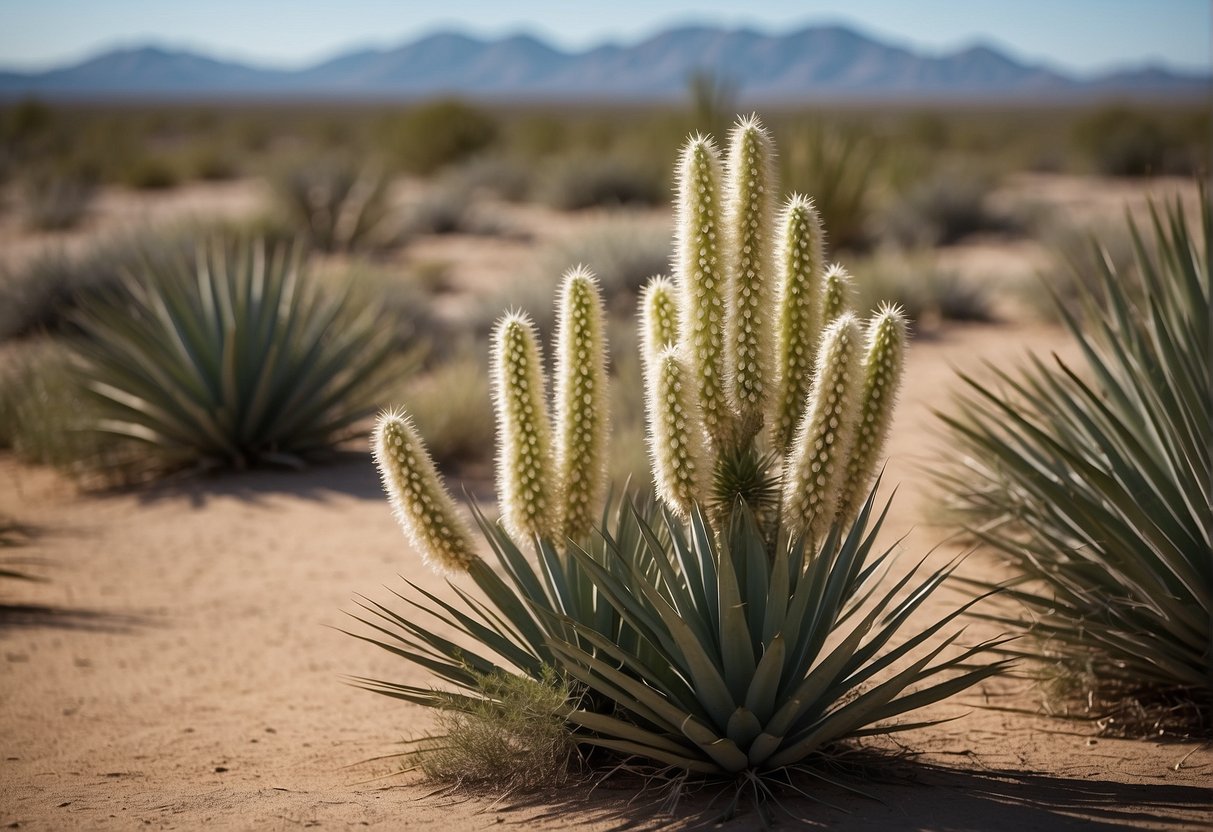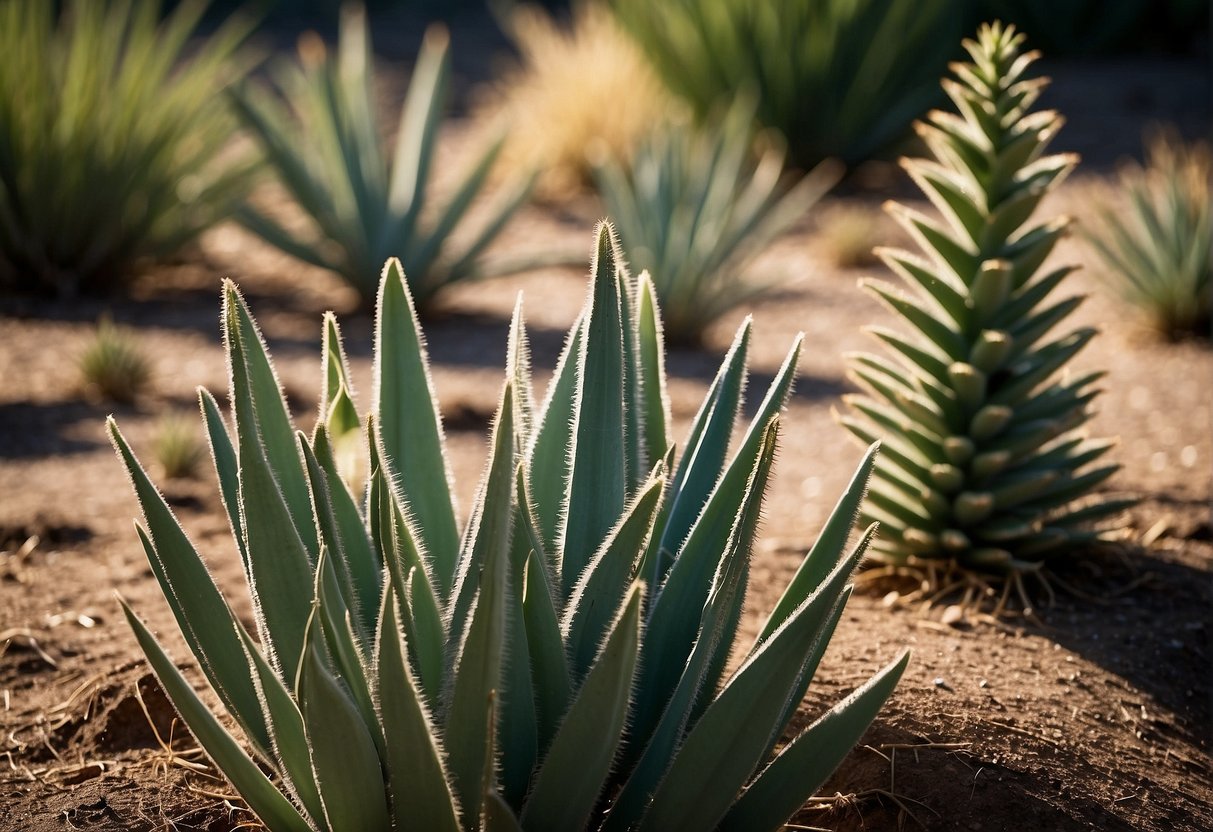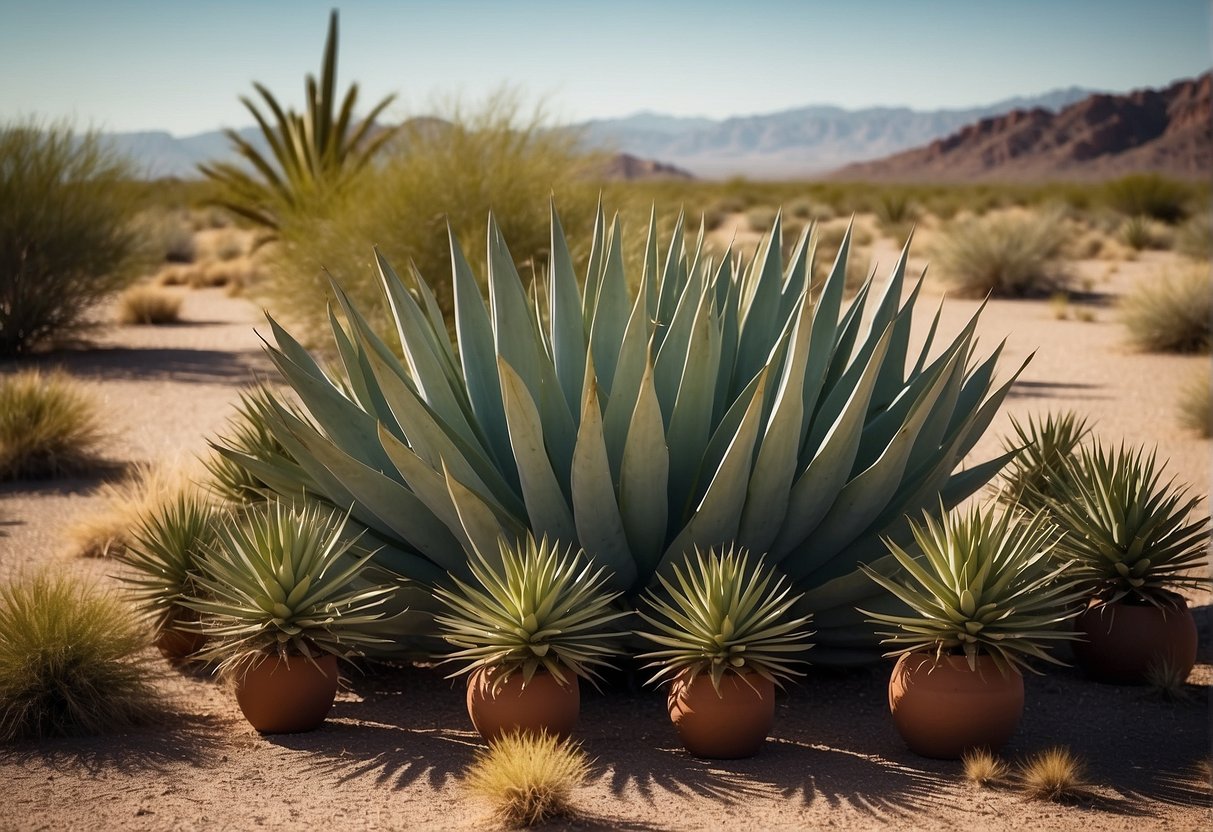Do you wonder about the variety of yucca plants available? Recognized for their distinctive look and adaptability for use in both interior and exterior environments, yucca plants have their origins in the Americas. For hundreds of years, they have served multiple purposes, including their use in medicine, as a food source, and for their fibers. This article aims to delve into the variety and categorization of yucca plants, highlighting their significance in human society.

Yucca plants are part of the Asparagaceae family and are known for their unique appearance, which includes long, sword-shaped leaves and tall flower stalks. There are over 40 species of yucca plants, each with its own distinct characteristics. Some species are small and compact, while others can grow up to 30 feet tall. In addition to their appearance, yucca plants are also known for their hardiness and ability to thrive in a variety of environments. Whether you are a plant enthusiast or simply curious about the diversity of plant life, this article will provide an in-depth look at the different types of yucca plants and their uses in human culture.
Key Takeaways
- Yucca plants are part of the Asparagaceae family and there are over 40 species.
- Yucca plants have unique appearances and are known for their hardiness.
- Yucca plants have been used for centuries for their medicinal properties, as a source of food, and for their fibers.
Diversity and Classification of Yucca Plants

Yucca plants are a diverse group of plants that belong to the family Asparagaceae. There are over 40 different species of yucca plants that are native to the Americas, with most of them being found in the arid regions of the southwest and southeast. Yucca plants are known for their unique physical features such as their sword-shaped leaves, spiky leaves, and rosette growth habit.
Species Overview and Distribution
Yucca plants are found throughout the Americas and the Caribbean. They are commonly found in arid regions such as the Mojave and Chihuahuan Deserts. Yucca filamentosa, also known as Spanish dagger, is one of the most common yucca plants found in the southeastern United States. Joshua trees, which are a type of tree yucca, are found in the Mojave Desert and are a symbol of the American Southwest.
Common Types and Their Characteristics
Some common types of yucca plants include banana yucca, soaptree yucca, spineless yucca, and beaked yucca. Yucca rostrata, also known as beaked yucca, is a popular ornamental plant due to its unique growth habit and blue-green leaves. Yucca baccata, also known as banana yucca, is known for its edible fruit. Yucca gloriosa, also known as Spanish dagger, is a popular landscape plant due to its striking appearance.
Cultivation and Growth Requirements
Yucca plants are known for their ability to grow in poor soil and drought conditions. They require lots of sun and well-drained sandy soil. Yucca plants are commonly used as ornamental plants in landscapes and as indoor houseplants.
Physical Features of Yucca Plants
Yucca plants have sword-shaped leaves that are often spiky and evergreen. They grow in a clump or rosette pattern and can range in size from small shrubs to large trees. Yucca plants produce white or blue flowers that are often fragrant.
Yucca Plants in Ecosystems
Yucca plants play an important role in many ecosystems. They provide food and habitat for a variety of animals, including the yucca moth. The yucca moth is the only insect that can pollinate yucca flowers, and yucca plants rely on the yucca moth for reproduction.
Utilization and Cultural Significance
Yucca plants have been used by humans for thousands of years. The fibers of yucca plants have been used to make baskets, clothing, and rope. Yucca plants also contain saponins, which can be used to make soap and shampoo. Yucca plants have cultural significance to many Native American tribes.
Ecological Interactions
Yucca plants have a complex ecological relationship with the yucca moth. The yucca moth lays its eggs in the ovary of the yucca flower, and the larvae feed on the developing seeds. In exchange, the yucca moth pollinates the yucca flower.
Conservation and Environmental Concerns
Some species of yucca plants are at risk due to habitat loss and over-harvesting. It is important to conserve yucca plants and their ecosystems to maintain their ecological and cultural significance.
Yucca Plants in Human Use and Culture

Yucca plants have been utilized by humans for various purposes for centuries. From ornamental and landscape use to traditional and modern applications, yucca plants have played a significant role in human culture and history. In this section, we will explore the different ways yucca plants have been used by humans and their cultural significance.
Ornamental and Landscape Use
Yucca plants are popular ornamental plants due to their unique and attractive appearance. They are commonly used in landscaping and gardening to add texture and interest to outdoor spaces. Some popular cultivars include the Bright Star, Color Guard, and Red Yucca plant (Hesperaloe parviflora). These plants are known for their sword-like leaves and stunning flowers that bloom in various colors.
Traditional and Modern Applications
Yucca plants have been used for various traditional and modern applications. Native Americans used yucca plants for their fiber, soap, and shampoo. The saponins found in yucca plants make them an excellent natural soap and shampoo alternative. Yucca plants are also edible, and their flowers and fruit can be eaten raw or cooked.
Cultural and Historical Significance
Yucca plants hold significant cultural and historical significance for Native Americans. They have been used in various ceremonies and are considered sacred plants. Yucca plants are also used as symbols of cultural heritage and are often depicted in art and literature.
Yucca as a Houseplant
Yucca plants are also popular as indoor houseplants. They are easy to care for and add a touch of greenery to indoor spaces. Some popular indoor cultivars include the Variegata and the Red Yucca plant.
Propagation and Care
Yucca plants are easy to propagate and care for. They can be propagated through stem cuttings or by dividing the plant. Yucca plants require minimal care and can thrive in a range of growing conditions.
Health and Safety Considerations
While yucca plants are generally safe, they can be toxic to pets if ingested. It is essential to keep yucca plants out of reach of pets and children. Some yucca varieties, such as the Yucca aloifolia, can also be toxic to humans.
Yucca Plant Varieties and Their Identification
There are over 40 different yucca plant varieties, each with its unique characteristics and identification features. Some popular varieties include the Yucca filamentosa, Yucca gloriosa, and Yucca elephantipes. Yucca plants can be identified by their sword-like leaves, stunning flowers, and distinctive growth patterns.
In conclusion, yucca plants have played a significant role in human culture and history. From their traditional uses to their modern applications, yucca plants are versatile and valuable plants. Whether used as ornamental plants, houseplants, or for their traditional uses, yucca plants are a fascinating and beautiful addition to any space.
Frequently Asked Questions
What are the common types of yucca plants found indoors?
There are several types of yucca plants that are commonly grown indoors, including Yucca elephantipes (spineless yucca), Yucca guatemalensis (Guatemala yucca), and Yucca filamentosa (Adam’s needle). These plants are known for their attractive foliage and easy-care nature, making them popular choices for indoor gardening.
Can you list the different types of yucca suitable for outdoor planting?
There are many types of yucca plants that are suitable for outdoor planting, including Yucca aloifolia (Spanish bayonet), Yucca gloriosa (moundlily yucca), and Yucca rostrata (beaked yucca). These plants are known for their hardiness and ability to thrive in a variety of conditions.
What are the distinguishing characteristics of Yucca gloriosa compared to Yucca aloifolia?
Yucca gloriosa and Yucca aloifolia are both hardy yucca plants that are suitable for outdoor planting. However, there are some key differences between the two. Yucca gloriosa has longer leaves and a more pronounced flower spike, while Yucca aloifolia has shorter leaves and a less prominent flower spike. Additionally, Yucca gloriosa is more cold-tolerant than Yucca aloifolia.
What are the uses of yucca plants in various applications?
Yucca plants have a variety of uses in different applications. They are often used as ornamental plants in landscaping and gardening, thanks to their attractive foliage and hardiness. Additionally, yucca plants have been used for centuries by Native Americans for medicinal purposes, and the roots of some species can be used to make soap and shampoo.
How can you differentiate between yuca and yucca plants?
While the names may sound similar, yuca and yucca plants are actually quite different. Yuca (also known as cassava) is a starchy root vegetable that is commonly eaten in Latin America, while yucca is a type of plant that is grown for its ornamental value. The easiest way to differentiate between the two is to look at their leaves – yucca plants have long, sword-like leaves, while yuca plants have broader, more rounded leaves.
What is considered the ideal outdoor yucca plant for landscaping?
The ideal outdoor yucca plant for landscaping will depend on your specific needs and preferences. Some popular options include Yucca rostrata (beaked yucca), Yucca filamentosa (Adam’s needle), and Yucca gloriosa (moundlily yucca). These plants are all hardy and easy to care for, making them great choices for landscaping projects.














